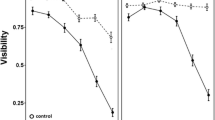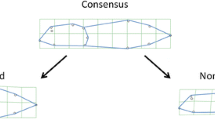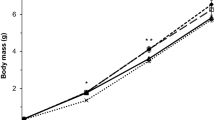Abstract
Ecological naiveté or the failure to recognize a novel enemy is often put forward as a cause of extirpation of biodiversity in newly invaded systems. We tested the efficacy of a generalized antipredator defense, namely reduced activity level, in the tadpoles of Rhacophorus arboreus to the threat of the invasive predator red swamp crayfish Procambarus clarkii in simplified laboratory environments. We first investigated the behavioral responses of the tadpoles in the presence of caged fed predators (native: dragonfly larvae and newts, and novel P. clarkii), and subsequently tested the vulnerability of predator-induced tadpoles to free-ranging predators. The tadpoles reduced activity level in the presence of the native predators but did not recognize the crayfish. Reducing activity level increased survival in the presence of native predators. This behavior was still effective in the presence of crayfish, but survivorship varied with the identity of the native predator from which the tadpoles received induction cues: tadpoles that were previously exposed to dragonfly larvae noticeably survived better than those previously induced by newts. Our findings suggest that naive prey may exploit information from native predators to better resist the threat of novel predators, but not all sources of induction confer the same benefit.


Similar content being viewed by others
References
Bates, D. M., M. Maechler, B. Bolker & S. Walker, 2015. Fitting linear mixed-effects models using lme4. Journal of Statistical Software 67: 1–48.
Bennett, A. M., D. Pereira & D. L. Murray, 2013. Investment into defensive traits by anuran prey Lithobates pipiens is mediated by the starvation-predation risk trade-off. PLoS ONE 8: e82344.
Bucciarelli, G. M., A. R. Blaustein, T. S. Garcia & L. B. Kats, 2014. Invasion complexities: the diverse impacts of nonnative species on amphibians. Copeia 2014: 611–632.
Costa, Z. J. & O. Kishida, 2015. Nonadditive impacts of temperature and basal resource availability on predator–prey interactions and phenotypes. Oecologia 178: 1215–1225.
Cox, J. G. & S. L. Lima, 2006. Naiveté and an aquatic–terrestrial dichotomy in the effects of introduced predators. Trends in Ecology and Evolution 21: 674–680.
Crawley, M. J., 2013. The R book, 2nd ed. Wiley, West Sussex, United Kingdom.
Cruz, J. M. & R. Rebelo, 2005. Vulnerability of Southwest Iberian amphibians to an introduced crayfish, Procambarus clarkii. Amphibia-Reptilia 26: 293–303.
Cruz, J. M., R. Rebelo & E. G. Crespo, 2006. Effects of an introduced crayfish, Procambarus clarkii, on the distribution of south-western Iberian amphibians in their breeding habitats. Ecography 29: 329–338.
Cruz-Rivera, E. & M. E. Hay, 2003. Prey nutritional quality interacts with chemical defenses to affect consumer feeding and fitness. Ecological Monographs 73: 483–506.
Dijk, B., A. Laurila, G. Orizaola & F. Johansson, 2016. Is one defence enough? Disentangling the relative importance of morphological and behavioural predator-induced defences. Behavioral Ecology and Sociobiology 70: 237–246.
Gazzola, A., G. Russo & A. Balestrieri, 2018. Embryonic and larval defensive responses of agile frog (Rana dalmatina) to alien crayfish. Ethology 124: 347–356.
Gherardi, F., B. Renai & C. Corti, 2001. Crayfish predation on tadpoles: a comparison between a native (Austropotamobius pallipes) and an alien species (Procambarus clarkii). Bulletin Français de la Pêche et de la Pisciculture 361: 659–668.
Gherardi, F. & S. Barbaresi, 2008. Feeding opportunism of the red swamp crayfish Procambarus clarkii, an invasive species. Freshwater Crayfish 16: 77–85.
Gomez-Mestre, I. & C. Díaz-Paniagua, 2011. Invasive predatory crayfish do not trigger inducible defences in tadpoles. Proceedings of the Royal Society of London B: Biological Sciences 278: 3364–3370.
Gosner, K. L., 1960. A simplified table for staging anuran embryos and larvae with notes on identification. Herpetologica 16: 183–190.
Halekoh, U. & S. Højsgaard, 2014. A kenward-roger approximation and parametric bootstrap methods for tests in linear mixed models–the R package pbkrtest. Journal of Statistical Software 59: 1–30.
Havel, J. E., K. E. Kovalenko, S. M. Thomaz, S. Amalfitano & L. B. Kats, 2015. Aquatic invasive species: challenges for the future. Hydrobiologia 750: 147–170.
Hettyey, A., K. Vincze, S. Zsarnóczai, H. Hoi & A. Laurila, 2011. Costs and benefits of defences induced by predators differing in dangerousness. Journal of Evolutionary Biology 24: 1007–1019.
Hettyey, A., Z. Tóth, K. E. Thonhauser, J. G. Frommen, D. J. Penn J. Van Buskirk, 2015. The relative importance of prey-borne and predator-borne chemical cues for inducible antipredator responses in tadpoles. Oecologia 179(3): 699–710.
Hettyey, A., K. E. Thonhauser, V. Bókony, D. J. Penn, H. Hoi & M. Griggio, 2016. Naive tadpoles do not recognize recent invasive predatory fishes as dangerous. Ecology 97: 2975–2985.
Higginson, A. & G. Ruxton, 2010. Adaptive changes in size and age at metamorphosis can qualitatively vary with predator type and available defenses. Ecology 91: 2756–2768.
Hossie, T. J. & D. L. Murray, 2010. You can’t run but you can hide: refuge use in frog tadpoles elicits density-dependent predation by dragonfly larvae. Oecologia 163: 395–404.
Kats, L. B. & R. P. Ferrer, 2003. Alien predators and amphibian declines: review of two decades of science and the transition to conservation. Diversity and Distributions 9: 99–110.
Kishida, O., G. C. Trussell & K. Nishimura, 2007. Geographic variation in a predator-induced defense and its genetic basis. Ecology 88: 1948–1954.
Lenth, R. V., 2016. Least-squares means: the R package lsmeans. Journal of Statistical Software 69: 1–33.
Lima, S. L. & L. M. Dill, 1990. Behavioral decisions made under the risk of predation: a review and prospectus. Canadian Journal of Zoology 68: 619–640.
Lodge, D. M., A. Deines, F. Gherardi, D. C. Yeo, T. Arcella, A. K. Baldridge, M. A. Barnes, W. L. Chadderton, J. L. Feder & C. A. Gantz, 2012. Global introductions of crayfishes: evaluating the impact of species invasions on ecosystem services. Annual Review of Ecology, Evolution, and Systematics 43: 449–472.
Matsui, M. & S. Seki, 2008. Handook of the larvae of frogs, salamanders, and newts in Japan (in Japanese). Bun-ichi Sougo Shuppan, Tokyo.
Matsuzaki, S. S., N. Usio, N. Takamura & I. Washitani, 2009. Contrasting impacts of invasive engineers on freshwater ecosystems: an experiment and meta-analysis. Oecologia 158: 673–686.
Mitchell, M. D., K. R. Bairos-Novak & M. C. Ferrari, 2017. Mechanisms underlying the control of responses to predator odours in aquatic prey. Journal of Experimental Biology 220: 1937–1946.
Nunes, A. L., A. Richter-Boix, A. Laurila & R. Rebelo, 2013. Do anuran larvae respond behaviourally to chemical cues from an invasive crayfish predator? A community-wide study. Oecologia 171: 115–127.
Pease, K. M. & R. K. Wayne, 2014. Divergent responses of exposed and naive Pacific tree frog tadpoles to invasive predatory crayfish. Oecologia 174: 241–252.
Polo-Cavia, N. & I. Gomez-Mestre, 2014. Learned recognition of introduced predators determines survival of tadpole prey. Functional Ecology 28: 432–439.
R Core Team, 2017. R: a language and environment for statistical computing. R Foundation for Statistical Computing, Vienna, Austria.
Ramamonjisoa, N., H. Rakotonoely & Y. Natuhara, 2018a. Differential vulnerability of two sympatric tadpoles to an invasive crayfish predator. Hydrobiologia 818: 119–127.
Ramamonjisoa, N., H. Rakotonoely & Y. Natuhara, 2018b. Defense investments and growth responses under different predation risks and gape-limitation predation threats in a tadpole prey. Behavioral Ecology and Sociobiology 72: 144.
Relyea, R. A., 2001a. Morphological and behavioral plasticity of larval anurans in response to different predators. Ecology 82: 523–540.
Relyea, R. A., 2001b. The relationship between predation risk and antipredator responses in larval anurans. Ecology 82: 541–554.
Rosier, R. L. & T. Langkilde, 2011. Behavior under risk: how animals avoid becoming dinner. Nature Education Knowledge 2: 8.
Schoeppner, N. M. & R. A. Relyea, 2009. Interpreting the smells of predation: how alarm cues and kairomones induce different prey defences. Functional Ecology 23: 1114–1121.
Sih, A., D. I. Bolnick, B. Luttbeg, J. L. Orrock, S. D. Peacor, L. M. Pintor, E. Preisser, J. S. Rehage & J. R. Vonesh, 2010. Predator–prey naïveté, antipredator behavior, and the ecology of predator invasions. Oikos 119: 610–621.
Sih, A., M. C. Ferrari & D. J. Harris, 2011. Evolution and behavioural responses to human-induced rapid environmental change. Evolutionary Applications 4: 367–387.
Souty-Grosset, C., P. M. Anastacio, L. Aquiloni, F. Banha, J. Choquer, C. Chucholl & E. Tricarico, 2016. The red swamp crayfish Procambarus clarkii in Europe: impacts on aquatic ecosystems and human well-being. Limnologica 58: 78–93.
Steiner, U. K., 2007. Investment in defense and cost of predator-induced defense along a resource gradient. Oecologia 152: 201–210.
Teplitsky, C., S. Plenet & P. Joly, 2004. Hierarchical responses of tadpoles to multiple predators. Ecology 85: 2888–2894.
Teplitsky, C., S. Plénet, J. P. Léna, N. Mermet, E. Malet & P. Joly, 2005. Escape behaviour and ultimate causes of specific induced defences in an anuran tadpole. Journal of Evolutionary Biology 18: 180–190.
The Ecological Society of Japan, 2002. Handbook of Alien Species in Japan. Chijin Shokan, Tokyo.
Tollrian, R., S. Duggen, L. C. Weiss, C. Laforsch & M. Kopp, 2015. Density-dependent adjustment of inducible defenses. Scientific Reports 5: 12736.
Uchiyama, R., N. Maeda, K. Numata & S. Seki, 2002. A photographic guide. Amphibians and Reptiles in Japan, Heibonsha, Tokyo.
Urban, M. C., 2007. The growth-predation risk trade-off under a growing gape-limited predation threat. Ecology 88: 2587–2597.
Van Buskirk, J., 2001. Specific induced responses to different predator species in anuran larvae. Journal of Evolutionary Biology 14: 482–489.
Wang, Q., J. Yang, G. Zhou, Y. Zhu & H. Shan, 2011. Length–weight and chelae length–width relationships of the crayfish Procambarus clarkii under culture conditions. Journal of Freshwater Ecology 26: 287–294.
Acknowledgements
We thank MEXT Japan and the Ecological Society of Japan Chubu division for supporting the study. We are grateful to two anonymous reviewers and Lee Kats for the constructive comments. We thank Daisuke Murakami, Harisoa Rakotonoely, Claire Oiire, Xioajun Zheung, and Saki Kimura for assistance. We thank the School of Information Science of Nagoya University for providing rooms to conduct the experiment. The present experiment complies with the current laws of Japan in the collection and the use of animals in research.
Author information
Authors and Affiliations
Corresponding author
Additional information
Handling editor: Lee B. Kats
Publisher's Note
Springer Nature remains neutral with regard to jurisdictional claims in published maps and institutional affiliations.
Electronic supplementary material
Below is the link to the electronic supplementary material.
Rights and permissions
About this article
Cite this article
Ramamonjisoa, N., Nakanishi, K. & Natuhara, Y. The efficacy of a generalized antipredator defense against a novel predator depends on the source of induction in prey. Hydrobiologia 836, 197–205 (2019). https://doi.org/10.1007/s10750-019-3951-6
Received:
Revised:
Accepted:
Published:
Issue Date:
DOI: https://doi.org/10.1007/s10750-019-3951-6




